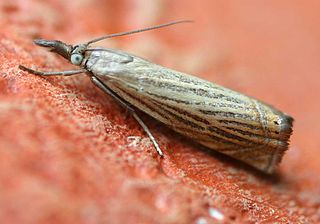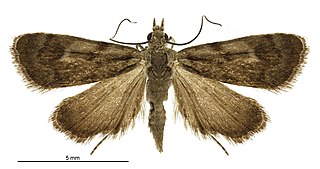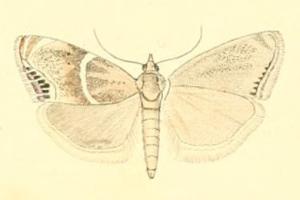
Magnolia is a large genus of about 210 to 340 flowering plant species in the subfamily Magnolioideae of the family Magnoliaceae. The natural range of Magnolia species is disjunct, with a main center in east, south and southeast Asia and a secondary center in eastern North America, Central America, the West Indies, and some species in South America.

The spider family Liphistiidae was first recognized by Tamerlan Thorell in 1869. When narrowly circumscribed, it comprises a single genus Liphistius, native to Southeast Asia; as of April 2024, this was the circumscription accepted by the World Spider Catalog. The family contains the most basal living spiders, belonging to the suborder Mesothelae. The family has also been circumscribed more broadly to include the family Heptathelidae as a subfamily, Heptathelinae, with the narrowly circumscribed Liphistiidae becoming the subfamily Liphistiinae.

Bauhinia is a large genus of flowering plants in the subfamily Cercidoideae and tribe Bauhinieae, in the large flowering plant family Fabaceae, with a pantropical distribution. The genus was named after the Bauhin brothers Gaspard and Johann, Swiss-French botanists.

Dugesia is a genus of dugesiid triclads that contains some common representatives of the class Turbellaria. These common flatworms are found in freshwater habitats of Africa, Eurasia, and Australia. Dugesia is best known to non-specialists because of its regeneration capacities.

Triplophysa is a genus of fish in the family Nemacheilidae found mainly in and around the Qinghai-Tibet Plateau in China, as well as inland waters of the larger part of central Asia. They can be distinguished from other genera of Nemacheilidae by marked sexual dimorphism, including the development of nuptial tubercles on breeding males. Currently, the genus is a mixed assemblage of species. Some lineages have been identified and treated as subgenera, but as Wikipedia follows Fishbase for fish species all but Hedinichthys have been treated as subgenera in Wikipedia, although Kottelat in his revision of the loaches did recognise them as valid. FishBase, however, includes these in Triplophysa without specifying subgenera and treats the names given by Kottelat as synonyms.
Archischoenobius is a genus of moths of the family Crambidae described by Speidel in 1984. Currently described species are endemic to China.

Calamotropha is a genus of moths of the family Crambidae.

Chrysoteuchia is a genus of moths of the family Crambidae described by Jacob Hübner in 1825. Most are native to Asia.

Eristena is a genus of moths of the family Crambidae, found in southern and eastern Asia.
Gargela is a genus of moths in the subfamily Crambinae of the family Crambidae. The genus currently comprises 22 Austral-Asian species, of which the majority has been described in recent years. Many species remain to be described, with their total number probably being around 40 species.

Glaucocharis is a genus of moths of the family Crambidae first described by Edward Meyrick in 1938. The type species for this genus is Glaucocharis stella.

Metaeuchromius is a genus of moths of the family Crambidae.

Paracymoriza is a genus of moths of the family Crambidae.

Scirpophaga is a genus of moths of the family Crambidae described by Georg Friedrich Treitschke in 1832. Asian species include significant rice stemborer pests.

The Scalopinae, or New World moles, are one of three subfamilies of the family Talpidae, which consists of moles and mole-like animals; the other two subfamilies being the Old World talpids and the Chinese shrew-like moles (Uropsilinae). The Scalopinae are the only Talpidae subfamily to consist entirely of undisputed moles and no mole-like close relatives such as shrew-moles or desmans.
Neogirdharia is a genus of moths of the family Crambidae.
Yingchengvirus is a genus of double stranded DNA viruses that infect haloarchaea. The genus was previously named Betasphaerolipovirus.
Pseudargyria acuta is a moth in the family Crambidae. It was described by Shi-Mei Song and Tie-Mei Chen in 2003. It is found in Xizang, China.

Leucania pseudargyria, the false wainscot, is a species of cutworm or dart moth in the family Noctuidae. It is found in North America.













